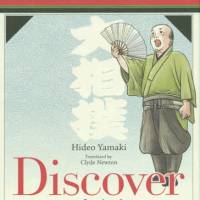The rituals, theatrical constructs and sartorial styles connected to this ancient martial art may seem visually arresting to the uninitiated, but as "Discover Sumo" tells us, there is much more to Japan's national sport than meets the eye.
Discover Sumo: Stories from Yobidashi Hideo, by Hideo Yamaki, Translated by Clyde Newton.
183 pages
GENDAI SHOKAN, Nonfiction.
Sumo yobidashi are workmen whose duties include announcing wrestlers' names, drumming, constructing the sumo ring and more. A retired yobidashi himself, the author maintains that the skills required to officiate at sumo events are largely acquired after a long process of observation and imitation.
Beside the summoning and announcing of names, yobidashi are tasked with erecting the wooden towers that act as advertising beacons, urging people to attend matches and tournaments, reading aloud the day's bouts, and performing religious services for the souls of deceased members of the sumo world.
Yamaki provides the kind of intriguing details to which only insiders are privy. We learn, for example, that the shape of the straw bales that form the periphery of the ring is achieved by beating them with beer bottles, and that talismans in the form of washed rice, kelp, salt, nutmeg and dried cuttlefish are interred in a 15-centimeter-wide hole at the center of the dohyō, the elevated earthen ring, remaining there until the end of a given tournament.
By following the daily routines of the yobidashi, the reader can assemble a comprehensive picture of the sumo world.



